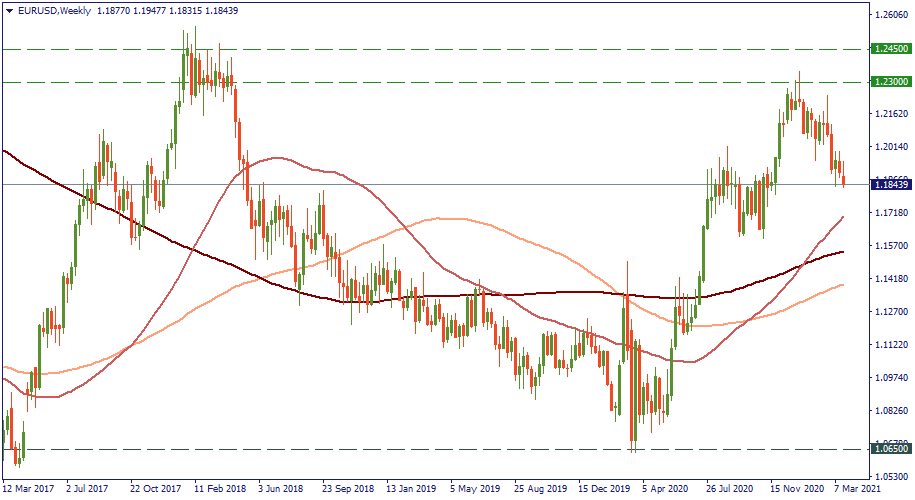EUR/USD: a year-long downtrend?
What happens to EUR/USD in the long-term depends on various factors:
- How the global economic recovery goes: if the dynamic is good, it will favor the USD more than the EUR. As the USD is the primary world currency in which most global transactions are done, higher global economic activity would lead to higher circulation and demand for the USD.
- How the Eurozone recovery compares to the US domestic recovery: whichever does better and quicker will help its corresponding currency to have more power and value.
- What the plans of the ECB and the US Fed are: any additional stimulus will inject more currency mass into the economy devaluing it in the long-run.
Let’s review some of these factors
Economic recovery
Domestically, the US seems to be recovering better than the Eurozone – primarily, because it’s doing better with Covid-19. In the US, deaths are slowing. If they preserve this dynamic, they will have no big issue coming back to normal by 2022. In the meantime, Germany has just imposed the strictest lockdown due to the infection spike, Paris is under curfew. In fact, half of Europe is still struggling against the virus so Europe doesn’t look like it’s going to be the US economic recovery dynamic. Hence, this factors favor the strength of the USD.
Globally, the pace of economic recovery is somewhat stable, and it is expected that 2023 will be the year when it’s all back to normal. However, there are serious threats to that scenario. The primary threat is the re-occurrence of the virus. It may happen to the fact that the vaccines are mostly available to the wealthiest nations while the rest of the world lacks resources, funds, channels to get vaccines. Recently, the WHO head warned the world leaders that saying that we may take us back to “square one” if vaccines don’t become available to the developing countries as well. This factor, therefore, also favors the USD: this time, because the investor fears may demand more US dollar as a safe-haven currency.
Monetary policy
The US Fed advised they are not planning to increase the interest rate until 2023. Or, at least, they don’t see indications for that so far. The Fed is adamant to aid the economy when it’s necessary, so hawkish moves are ruled out at the moment. In addition to that, a $3-trln stimulus was said to be discussed in the US Capitol. That scenario would increase the amount of US dollars in circulation and reduce the USD’s value. Overall, from this side, the outlook for the USD is pretty dovish – and, hence, bearish. But how does the Eurozone look?
At the last session, the ECB confirmed that no change to the internal monetary policy will take place until and unless the inflation is well above the mark of 2%. So far, it’s far from that mark, as are many other economic indicators. Moreover, the ECB is planning to do more bond purchases over the coming months which may bring the EUR down, too. Therefore, the EUR’s outlook is at least as dovish as that of the USD.
Technical outlook
In 2020, when the virus hit, EUR/USD rose. After that, it bounced downwards from the resistance channel of 1.23-1.2450 left from 2017-2018. What we are observing now may possibly be a beginning of a downtrend similar to the one in 2018-2019. Fundamental factors may contribute to that downtrend as most factors appear to favor USD rather than EUR. If that’s the case, we may well see EUR/USD trade at 1.12-1.13 at the end of the year.

